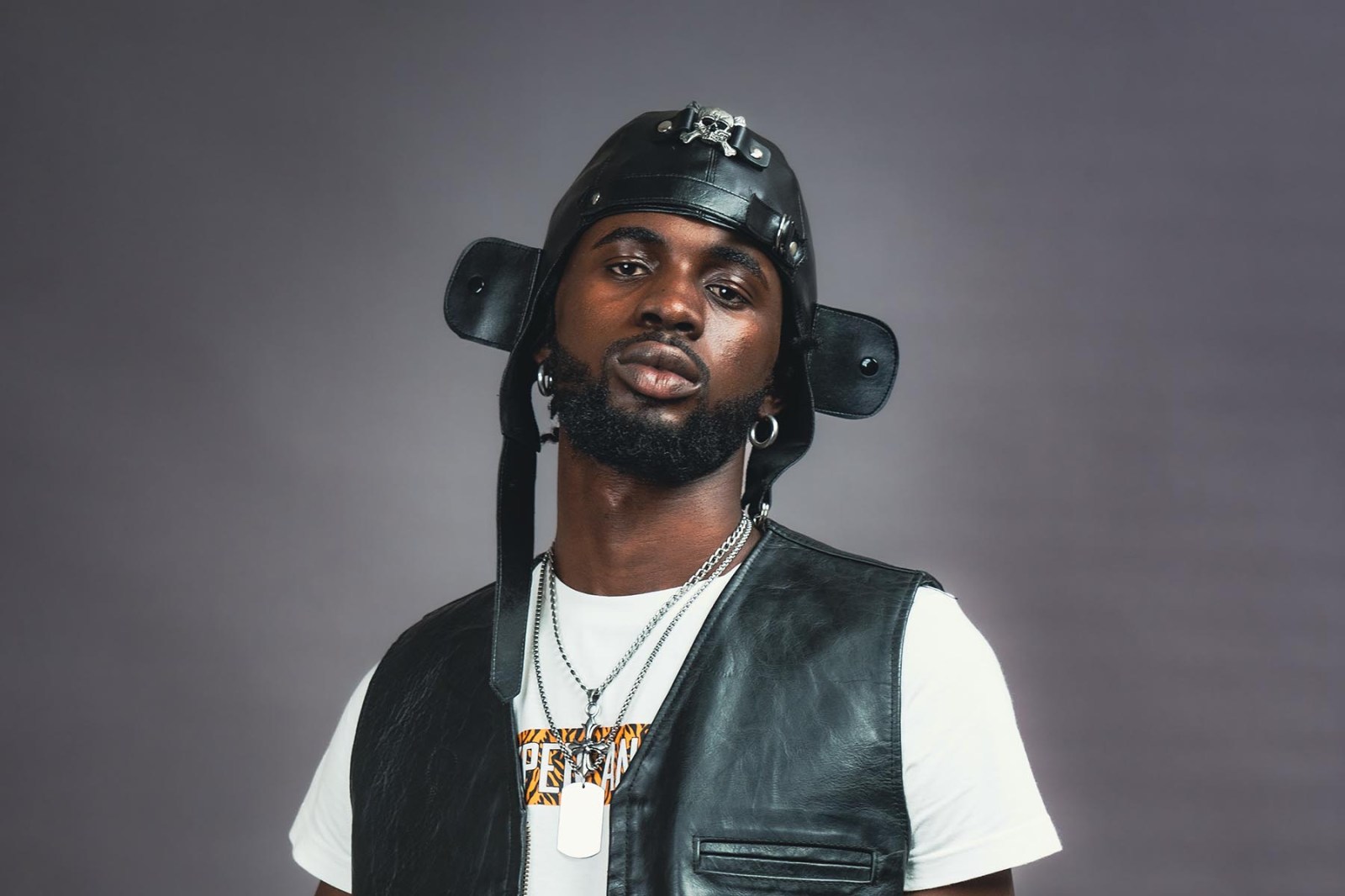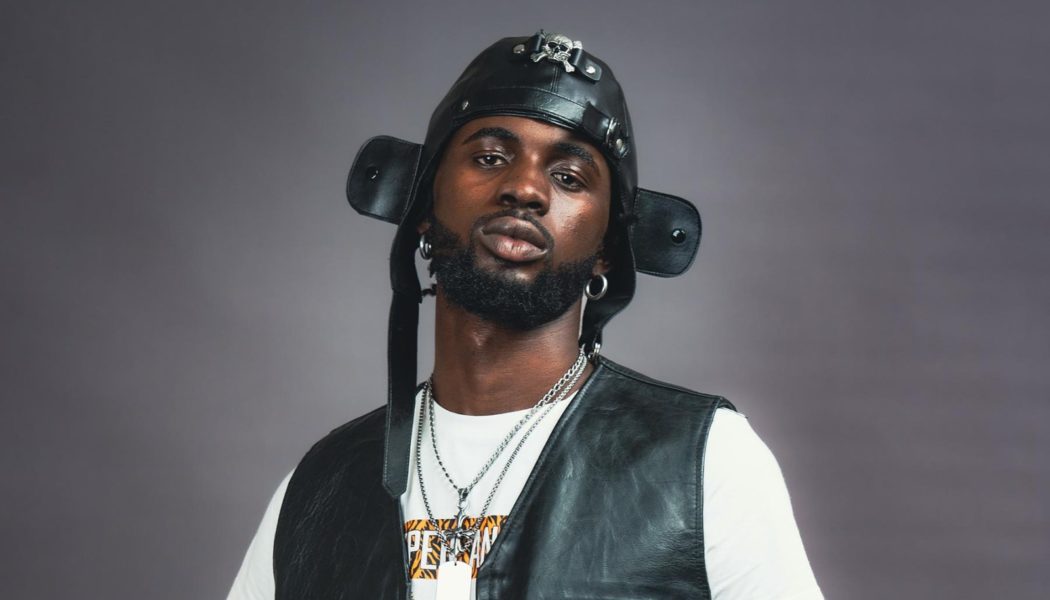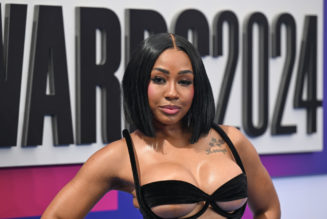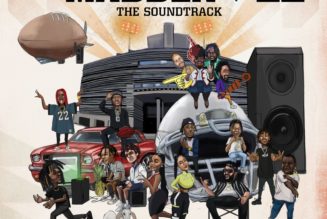
Preceded by a crew of gymnasts who shot fire — and themselves — high in the air, Black Sherif earned a hero’s welcome when he took the stage at the El-Wak Stadium in Accra, Ghana, to headline the AfroFuture festival last December. The event, which has become one of the hallmarks of winter celebrations in West Africa, attracted roughly 40,000 attendees across its two days, according to its founder. Black Sherif was the sole Ghanaian artist to headline, and he stands as one his country’s brightest stars thanks to his eclectic remaking of U.K. drill, West African hiplife, highlife, and reggae. His hits “Kweku the Traveller” and “Second Sermon” are bold epics steeped in adversity and relentlessness, performed in his native Twi, pidgin, and English. “Second Sermon” even attracted Afrobeats elder statesman Burna Boy, whose remix raised Sherif’s profile as he broke out in 2021.
On stage, he looked like a dystopian gladiator, stomping in massive black Rick Owens Splint sneakers that towered up to his shins, a striped denim skort, and terse chest and shoulder pads. Backed by a black-robed choir and full band, he maintained his unmistakable voice — gruff, solid and urgent, like a battle cry. “I really love to dress, go very, very, very dramatic,” the versatile vocalist tells me over Zoom nearly two months later. I tell him from what I’ve seen over the course of his ascent, his look is often war-ready. He says he wants to channel how raspy and heightened his voice is into the way he presents. “So war-ready is really spot on,” he agrees. “You can’t see sound, but you can represent it with a style.”
When we talk, Sherif has just walked his first show at London Fashion Week, for Labrum, a U.K. brand channeling West African heritage that he also wore when he first performed in London in 2022. “My mom is a seamstress, so it’s been fashion since I was born,” he says. Born Mohammed Ismail Sherif Kwaku Frimpong and raised in a tight-knit town about 120 miles northwest of Accra, he would alter his school uniforms and make himself decorative face masks to dance in when that was his main outlet.
He started making his own music in high school with a crew of hip-hop heads who rapped over beats at school tables. Later, his sense of style would come to influence his unique wail, like when he discovered Norwegian metal while searching for punky looks on Pinterest. “I think the clothes were my tickets to the music,” he says. “The clothes that I was seeing… [I asked myself] ‘Which people would dress like this?’ So I went to search about their music: ‘Yo, I actually love this.’” He trained his voice to mirror the sense of harshness and distortion that moved him in metal.
In his community, a mining town called Konogo Zongo that he describes as “pretty intimate,” pursuing music seriously was a tough choice. “Music is haram. That’s what I was told in Makaranta,” Sherif says — Makaranta being the place where local kids learned Islam, and haram meaning forbidden. But he says he told himself, “I know how to sing and I know I can make a life out of this. I have to rebel my way out.”
In Konogo Zongo, where it seemed like everyone knew everyone, it can be easy to be content with the status quo, he says. “You’re very comfortable living in town, having a career, having your family in the town…But then again, there are people that know and believe there’s a bigger world outside. I saw my generation there and people that I grew up with just realize. People are venturing into stuff that we didn’t see when we were growing up.”
Sherif’s debut album, 2022’s The Villain I Never Was, is heavy, full of themes of loss, survival, and holding on to hope. He says his next album won’t feel as severe. “I won’t say it’s sweet, [but] maybe it’s a bit softer than whatever I’ve done before,” he explains. “In my day-to-day life, I don’t always listen to drill music. I think I was inspired by songs that I want to listen to in the morning, songs that I want to listen to at midnight.” He’s been particularly inspired by country blues and R&B. “I’m singing on this album,” he beams proudly. “I’m really singing.”
He’s certain that the future of music is African, because there’s so much musical diversity there. He sees the influx of eyes and ears on places like Accra in the festive season creating opportunities for local creatives, even as the flood of Western tourists brings newfound economic challenges for locals in the form of widespread price gouging. (Black Sherif admits that he isn’t sure how to contend with this problem.) He’s into artists like Obongjayar, a moody singer from Nigeria melding psychedelic soul, rock, and Afrobeat (no s), the funk sound Fela Kuti pioneered in the 1970s.
“I’m really in touch with this African soil,” he says. “There are a lot of alternative genres in Africa – it’s not only just Afrobeats and amapiano. Those are things that are breaking into the mainstream, but there are so many more exciting genres that people are doing here.”









